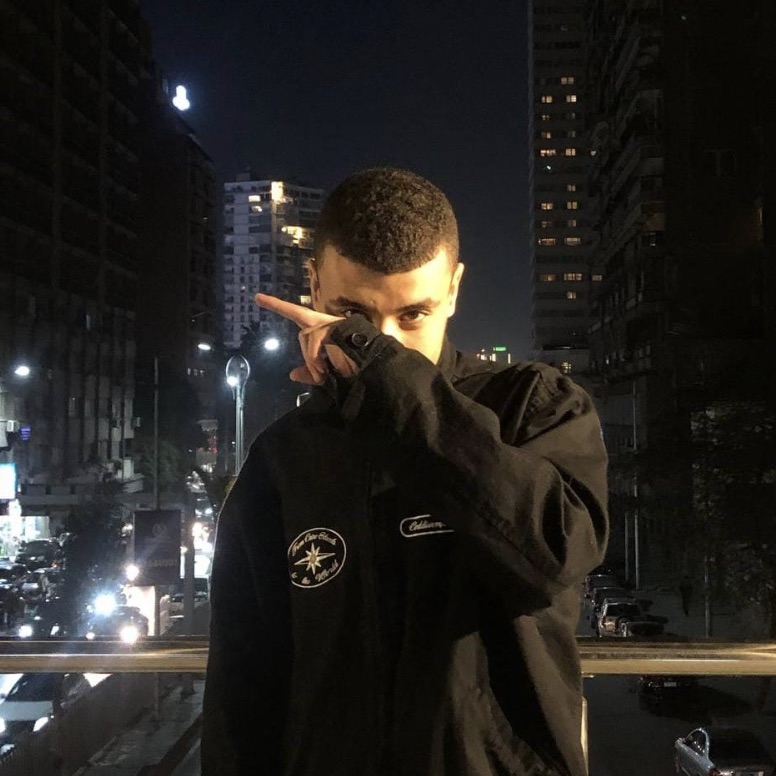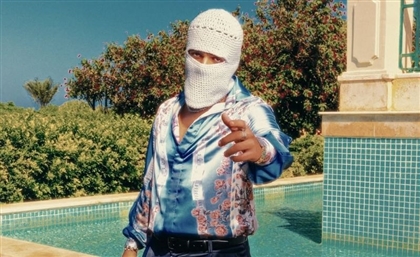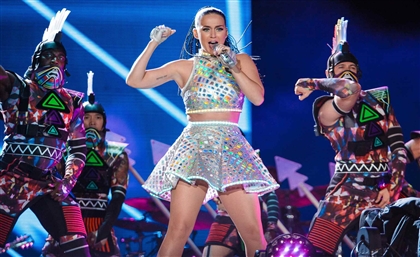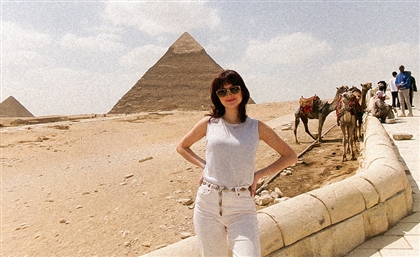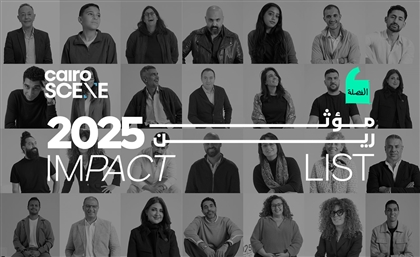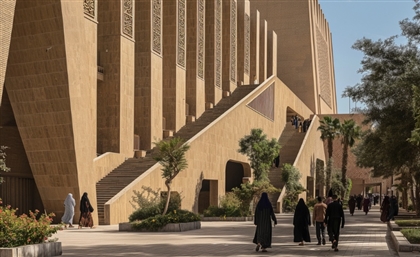From CounterCulture to Pop: Is Egyptian Rap Losing Its Edge?
SceneNoise staff writer Omar Ghonem explores the ongoing transformation of the Egyptian rap scene.

The Egyptian rap scene is undergoing a seismic shift, leaving observers both inside and outside the industry scratching their heads. The once-innovative landscape has been radically transformed, distancing itself from its roots. Intellectual, cultural and musical shifts have reshaped the scene, leading to both gains and losses. Throughout history, commercial success and artistic value have often been at odds. Only a select few attempts have managed to strike the delicate balance between these two competing forces. However, the Egyptian rap scene seems to have tilted the scales heavily in favour of commercial success, potentially sacrificing artistic integrity. This trade-off, while understandable from a capitalist viewpoint, raises questions about the long-term sustainability of the scene and the influence of industry gatekeepers.

GLOBAL PEAK VS COMMERCIAL INFANCY
In 2017, Nielsen released its annual report stating that rap accounted for eight out of the 10 most successful albums of the year, surpassing rock and pop - genres that had dominated that space of commercial success for decades. A report like this doesn't seem surprising now, nor was it back then, as rap had spread like a wildfire in the music industry at the beginning of the second decade of the millennium, following the wave of trap music that swept through the American and Western music scenes. Artists like Young Thug, Future and Travis Scott built upon and developed the foundations laid by Kid Cudi and Kanye West to bring rap closer to pop, transforming it from angry music filled with harsh language and street slang, drawing its strength from poetic writing, into more melodic music that plays on sonic appeal rather than lyrical strength, while addressing more personal themes centred around emotions and individual struggles.
At the same time, on the other side of the world, specifically in the Egyptian music scene, rap was still in its commercial infancy. Despite attempts to create rap music since the 1990s, there was always a significant gap between the local scene in Egypt and what was happening outside of it. Until the mid-2010s, rap in Egypt was in a state of unjustified delay, where its creators clung to outdated principles and obsolete concepts about what rap music should be, keeping them deliberately confined to the ‘underground’.
The first real attempt at change, which can be described as revolutionary, came from Abyusif and Ahmed El Ghazouli (Swag Lee), who managed to create rap music that was relatively aligned with what was happening in the Western rap scene. Abyusif and Zuli's experiment was more exploratory than commercial, offering fresh, revolutionary rap music that was stylistically ahead of the Egyptian rap scene. The most impactful aspect of this experience, aside from Zuli's forward-thinking production, was Abyusif's lyrical approach, which introduced a purely Arabic - and specifically Egyptian - writing style, not attempting to imitate or borrow themes from Western rap. Even in terms of language and terminology, it was entirely original, injecting new energy into the scene and influencing a group of rising rappers who would later take rap to its commercial peak.

THE RISE OF EGYPTIAN HIP-HOP
Now, as this article is being published, rap dominates the music industry both locally and globally, becoming the number one genre in the world by its numbers, with its creators being top-tier celebrities. In just a few years, the rap scene in Egypt and the Arab world has managed to catch up with its Western counterpart, thanks to the openness brought about by social media and the internet-age kids, allowing rappers and producers to keep up and be more informed about rap trends on a global scale.
Considering the commercial success and widespread reach of hip-hop, it has been a double-edged sword for the genre, both globally and locally. Hip-hop, particularly in the American scene, the birthplace of the genre, has infiltrated every form of music, influencing them significantly to the point where almost everything is now hip-hop.
However, locally, the commercial rise of hip-hop in Egypt was initially almost rejected by everyone except its creators and its core audience, which was mostly the younger generation. It faced strong resistance from public opinion and the conservative art establishment. Yet, despite this, the commercial success that the scene achieved through collective work and rapid growth helped build a solid infrastructure for the genre, ensuring its continuity and expansion. This has led to a real, influential scene that reached its peak in 2020 when rappers became the face of promotional campaigns. However, that creative curve has since started to decline for various reasons, threatening to cripple a musical movement that was the boldest and most influential culturally and musically, for the new generation.
A MOVEMENT TAKING SHAPE
Let’s go back to 2017 to provide some context and complete the picture. A special movement began to take shape in Alexandria, one that can be described using the term "scenius," introduced by ambient music legend and philosopher Brian Eno to explain the collective genius of an artistic scene. This movement appeared across Egypt, but it was most prominent in Alexandria, led by two young men determined to elevate rap from the industry's depths to its highest commercial potential. Marwan Pablo and Wegz, considered the key figures in this pivotal shift after Abyusif, alongside artists like Lege-Cy, entered the music industry with limited resources. Their success was achieved through true collective effort, with many people working behind the scenes to slowly and steadily break through the commercial barriers of the industry.
What set this artistic movement apart was its awareness of the Western hip-hop scene, especially in America, coupled with an unspoken alignment around common goals. These artists created music rooted in personal experiences, rebellious and critical of their surroundings through a self-reflective lens. It was music that expressed the frustrations of a generation shaped by the internet and exposed to Western culture, a mostly middle-class generation that found no representation in Egypt's two dominant music scenes at the time: pop and mahraganat.
 This group, drawing from their emotional experiences and diverse influences, perhaps created the most significant artistic movement of the new millennium in Egypt, coinciding with similar movements across the Middle East, such as the Moroccan and Palestinian scenes. The period between 2017 and 2019 marked the golden era for Egyptian rap, with intense competition among rappers and a prolific release of meticulously crafted music, all without compromising quality. There was a palpable hunger driving everyone involved in rap, from producers and rappers to small production companies, video directors, photographers and designers, all contributing to a comprehensive artistic movement that used rap as its means of expression.
This group, drawing from their emotional experiences and diverse influences, perhaps created the most significant artistic movement of the new millennium in Egypt, coinciding with similar movements across the Middle East, such as the Moroccan and Palestinian scenes. The period between 2017 and 2019 marked the golden era for Egyptian rap, with intense competition among rappers and a prolific release of meticulously crafted music, all without compromising quality. There was a palpable hunger driving everyone involved in rap, from producers and rappers to small production companies, video directors, photographers and designers, all contributing to a comprehensive artistic movement that used rap as its means of expression.
This was not a politically rebellious generation. Writer Mina Nagy described them as the "post-revolution generation." In his article, ‘What’s Left of the Rap Scene’, published on the Al-Marayeh website, Nagy noted: "The compass of this generation is not social protest, but social success - accepting reality and playing the game rather than changing it." Artistically, this generation surpassed their predecessors by a wide margin, even though the musical aesthetics borrowed heavily from Western scenes and weren’t deeply rooted in Egyptian culture and identity. Still, they managed to harness the elements of hip-hop and trap to their advantage, creating their own distinct sound, which culminated in the revolutionary fusion of ‘trap shaabi’ that stood at the top both artistically and commercially.
What helped hip-hop spread during this period was its ability to resonate with younger listeners. The music expressed a defeated generation surrounded by frustration, especially in the middle class. While mahraganat had become the alternative to Egyptian pop, its impact was evident, but it didn’t capture the spirit of the internet generation - a generation that found itself in a politically and economically fractured country after a major revolution left their future uncertain, with no clear path forward. The internet became their refuge, and they were heavily influenced by Western, particularly American, media.
Rappers from this generation differed in their subject matter from those before them. They were less interested in political issues or traditional rap themes like boasting, power plays or false bravado. For example, in Wegz's track ‘Ballerina’ from this era, you can hear him delivering simple lines about middle-class aspirations for upward mobility: "All I want is money and a visa." These lyrics spoke authentically to a demographic that hadn’t previously found representation in music. Unlike hip-hop's origins in America, which emerged from the lower class, rap in Egypt grew out of the middle class - early on, they had already been exposed to the wider world around them.
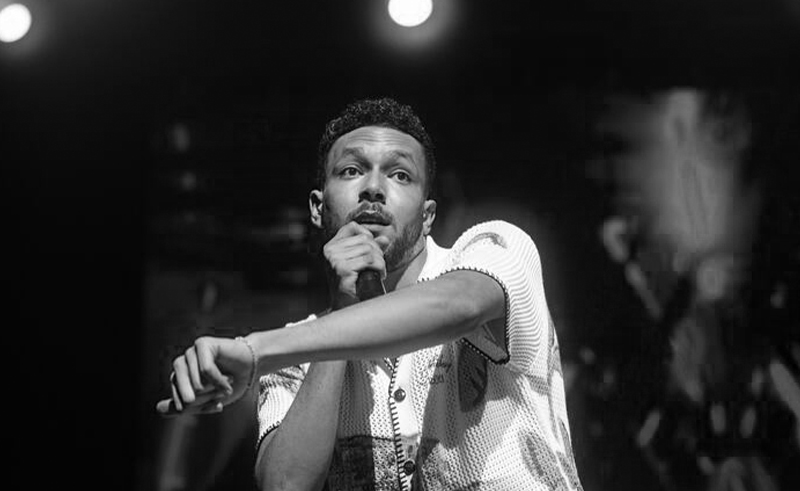
SLIPPERY SLOPE
By 2021, rap in Egypt had reached the height of its commercial success, achieving unprecedented levels of popularity and securing a significant share of the Egyptian music industry. Major corporations capitalised on this momentum, heavily relying on rappers to lead their advertising campaigns. This, in turn, solidified rap's legitimacy as a musical genre with its own aesthetic within the larger industry. However, this artistic legitimacy was not fully acknowledged by mainstream media or official institutions such as the Musicians Syndicate, which remained hesitant to fully accept the genre and continued to downplay its significance.
Led by artists like Wegz, Marwan Pablo, Marwan Moussa, Afroto, Moussa Sam and Abo El Anwar, rap became the elephant in the room of Egypt’s artistic ecosystem - impossible to ignore. In response, the Syndicate, under the leadership of Mostafa Kamel, made awkward attempts to engage with prominent rap figures, suggesting impractical ideas like requiring live instruments and musicians for their performances. This revealed the outdated mindset of the establishment and its insistence on clinging to old principles.
Strangely, there was a noticeable shift in attitude among the rappers themselves. They seemed to gradually accept the Syndicate’s conditions, partly driven by a sense of inferiority due to public perceptions of rap and the Syndicate’s antiquated definitions of what constitutes ‘art’. Over time, many rappers began distancing themselves from the raw essence of the genre, gravitating toward safer, more pop-oriented sounds. Some even started proclaiming that they were not just rappers, but ‘all-around artists’, a vague statement reflecting a lack of identity and a capitulation to pressures they once fought against, including the pull of commercial success.
 In parallel, rap’s appeal within the American scene began to wane. Revolutionary releases became scarce, and much of the music felt repetitive, with artists recycling old sounds. The UK drill scene attempted to break this cycle but had only a brief moment before fizzling out. Despite this, the Egyptian rap scene adopted drill, leading to a period between 2021 and 2023 dominated by this style. However, the drill's limited sonic range made it difficult to innovate, and it quickly became monotonous and uninspired. Similarly, the once-thriving wave of shaabi trap music began to decline, as its producers struggled to evolve the genre’s aesthetics.
In parallel, rap’s appeal within the American scene began to wane. Revolutionary releases became scarce, and much of the music felt repetitive, with artists recycling old sounds. The UK drill scene attempted to break this cycle but had only a brief moment before fizzling out. Despite this, the Egyptian rap scene adopted drill, leading to a period between 2021 and 2023 dominated by this style. However, the drill's limited sonic range made it difficult to innovate, and it quickly became monotonous and uninspired. Similarly, the once-thriving wave of shaabi trap music began to decline, as its producers struggled to evolve the genre’s aesthetics.
One major factor contributing to the decline of this movement was the pursuit of broader appeal. Rap, as a raw and rebellious form of music, is inherently difficult to digest for the masses. Its confrontational nature and lyrics are unlikely to resonate beyond a certain audience. Artists, particularly Wegz, started exploring other avenues, with Wegz boldly transitioning to pop without much warning. His song ‘El Bakht’ shattered records in the scene, but when compared to tracks like ‘Ali Baba’, it featured more polished and softened lyrics. Although ‘El Bakht’ dealt with love, a theme Wegz had tackled before, the delivery lacked the grit and authenticity that once defined his style. This track marked a significant turning point - both the commercial peak of Egypt’s rap scene and its descent into a more palatable, less daring musical landscape.
We began to see rappers who had once embraced the genre's roots losing their edge, drifting toward pop under the guise of ‘experimentation’ and exploring new territories. Artists who had initially positioned themselves as part of a groundbreaking cultural movement gradually abandoned that mission in favour of broader success. As music critic and journalist Ma'an Abu Taleb aptly put it, "Rap no longer impresses us," as its creators succumbed to the pressures of commercialism. Rap had become a fragile shell, with its practitioners producing weak pop music rather than making any real attempts at experimentation. Pop had swallowed rap, stripping it of its rebellious nature and transforming it into an easy-to-consume, profitable product - more about appearing in ads than making statements.
This shift began with Wegz and culminated with the release of TUL8TE’s latest album, which blended pop and rap with a 90s nostalgic mould. The album relied on soft, polished and hybrid aesthetics, allowing the artist to transition from his early-on aggressive, experimental rap to the top of the pop charts. This marked the end of a once-revolutionary artistic wave, which was sacrificed in pursuit of commercial success, reduced to a formulaic and disposable framework.
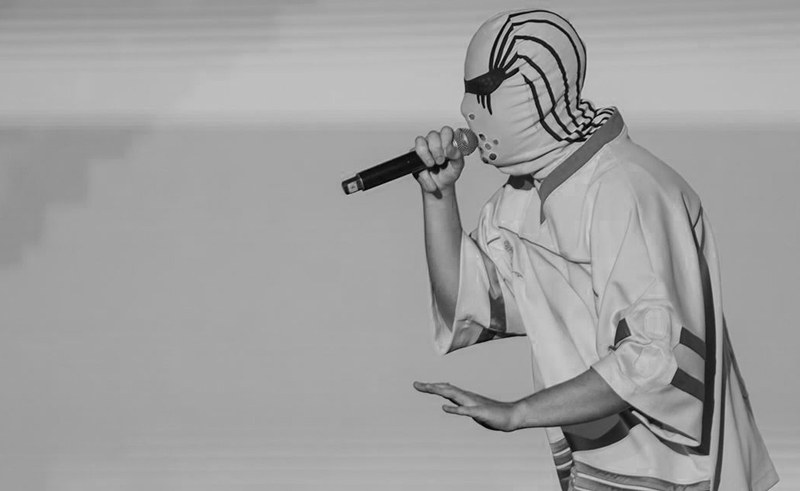 Rap, despite everything, is a genre that will never die. It is in a constant state of renewal and evolution, as it does not rely on a fixed formula. Rap is versatile, adaptive, and always capable of borrowing elements from various musical genres and framing them within its own unique aesthetic. While the genre may be experiencing a creative decline at the moment, both locally and globally, the current state of local rap differs greatly from its global counterpart. Globally, rap might seem overused and repetitive, but its core aesthetics remain solid, and efforts to reinvent it do not sanitise it but aim to make it more aggressive and bold, as seen in the works of artists like Playboi Carti and Yeat.
Rap, despite everything, is a genre that will never die. It is in a constant state of renewal and evolution, as it does not rely on a fixed formula. Rap is versatile, adaptive, and always capable of borrowing elements from various musical genres and framing them within its own unique aesthetic. While the genre may be experiencing a creative decline at the moment, both locally and globally, the current state of local rap differs greatly from its global counterpart. Globally, rap might seem overused and repetitive, but its core aesthetics remain solid, and efforts to reinvent it do not sanitise it but aim to make it more aggressive and bold, as seen in the works of artists like Playboi Carti and Yeat.
Locally, however, the genre feels empty, abandoning its core aesthetics, with its sounds becoming overly polished and easy to digest. The solution lies in holding onto the essence of the genre, its culture and its core aesthetics, while renewing it in a way that doesn’t lead to pop, but instead enhances its production methods and creative processes. Pop has the ability to swallow everything, and it has indeed absorbed rap. However, the resistance still exists, led by underground heroes and scene stars who remain committed to the genre’s culture.
- Previous Article Italian-Palestinian Duo No Input Debuts Eponymous Electro EP
- Next Article A Century of Hospitality: Discover Egypt's Historical Hotels
Trending This Week
-
Dec 27, 2025
-
Dec 23, 2025







